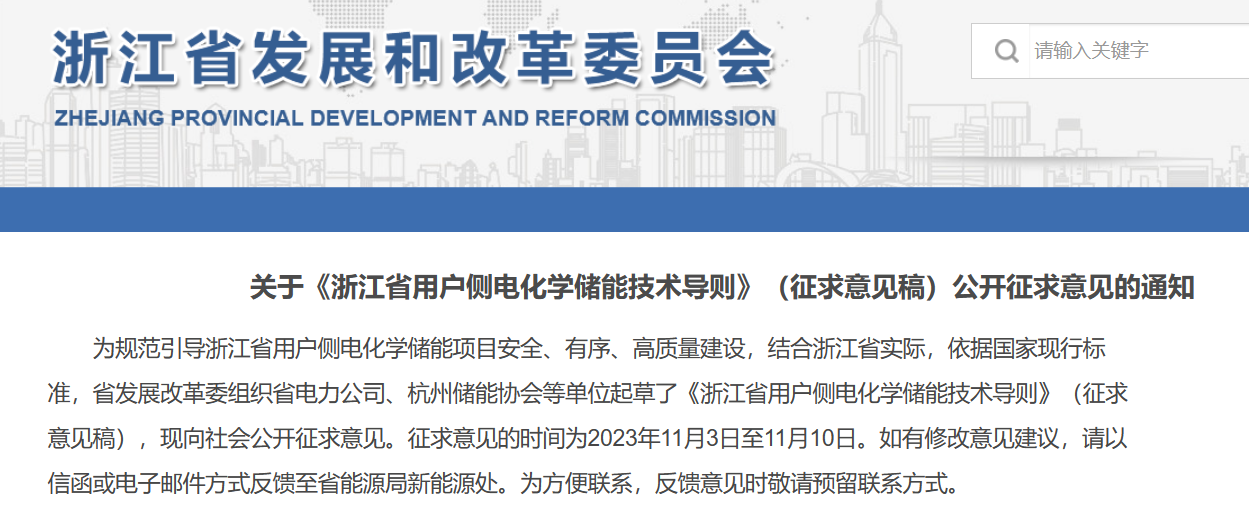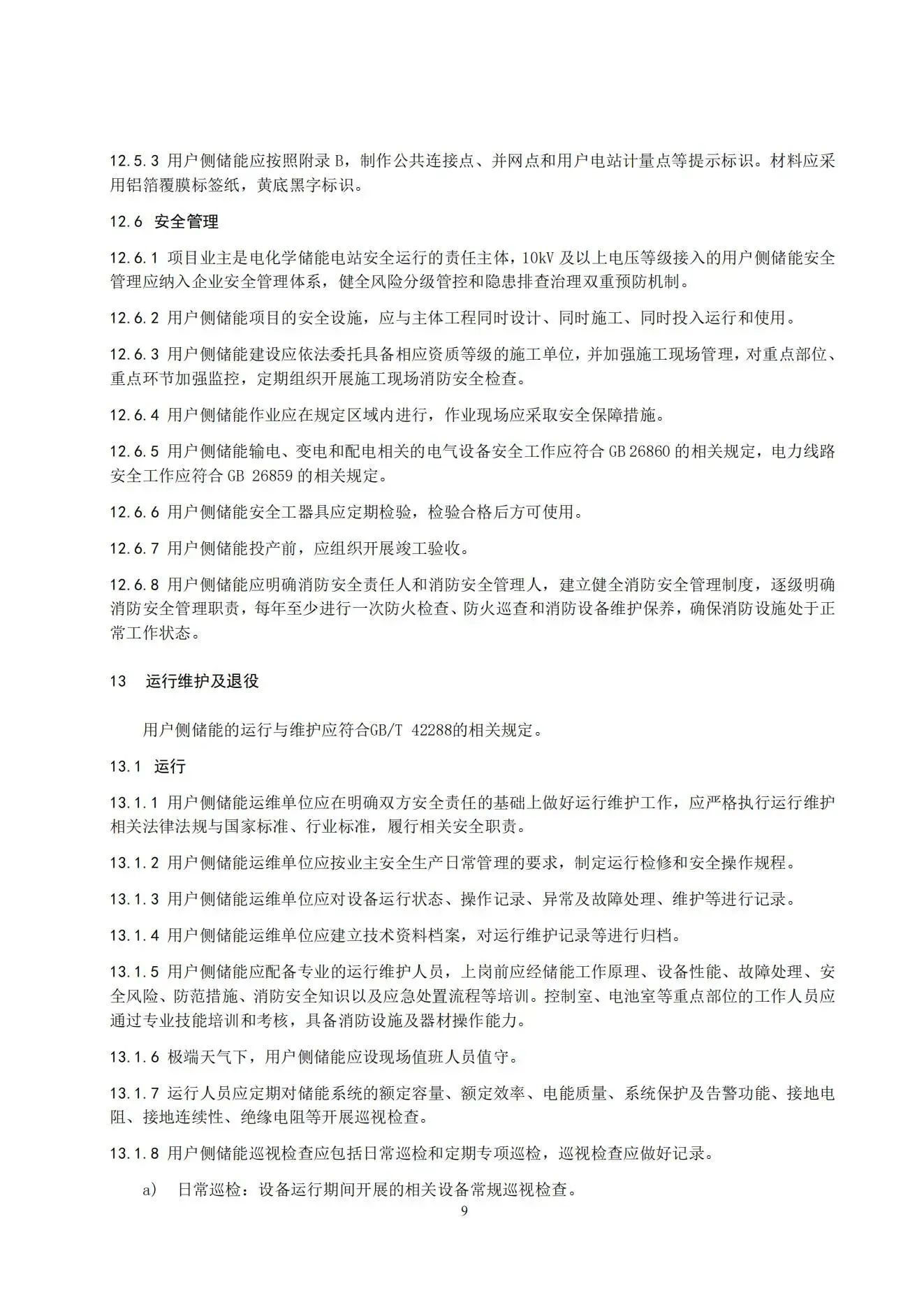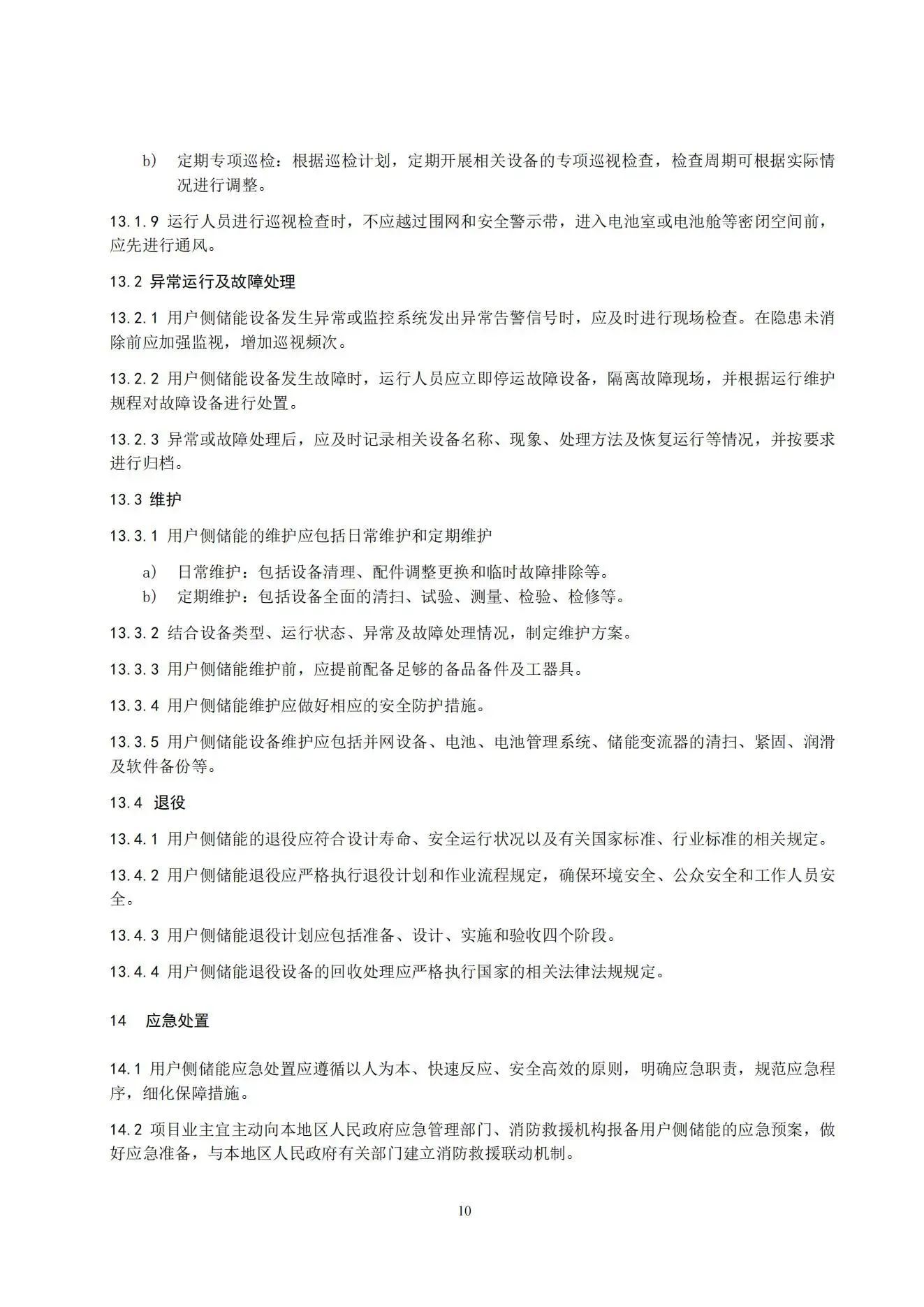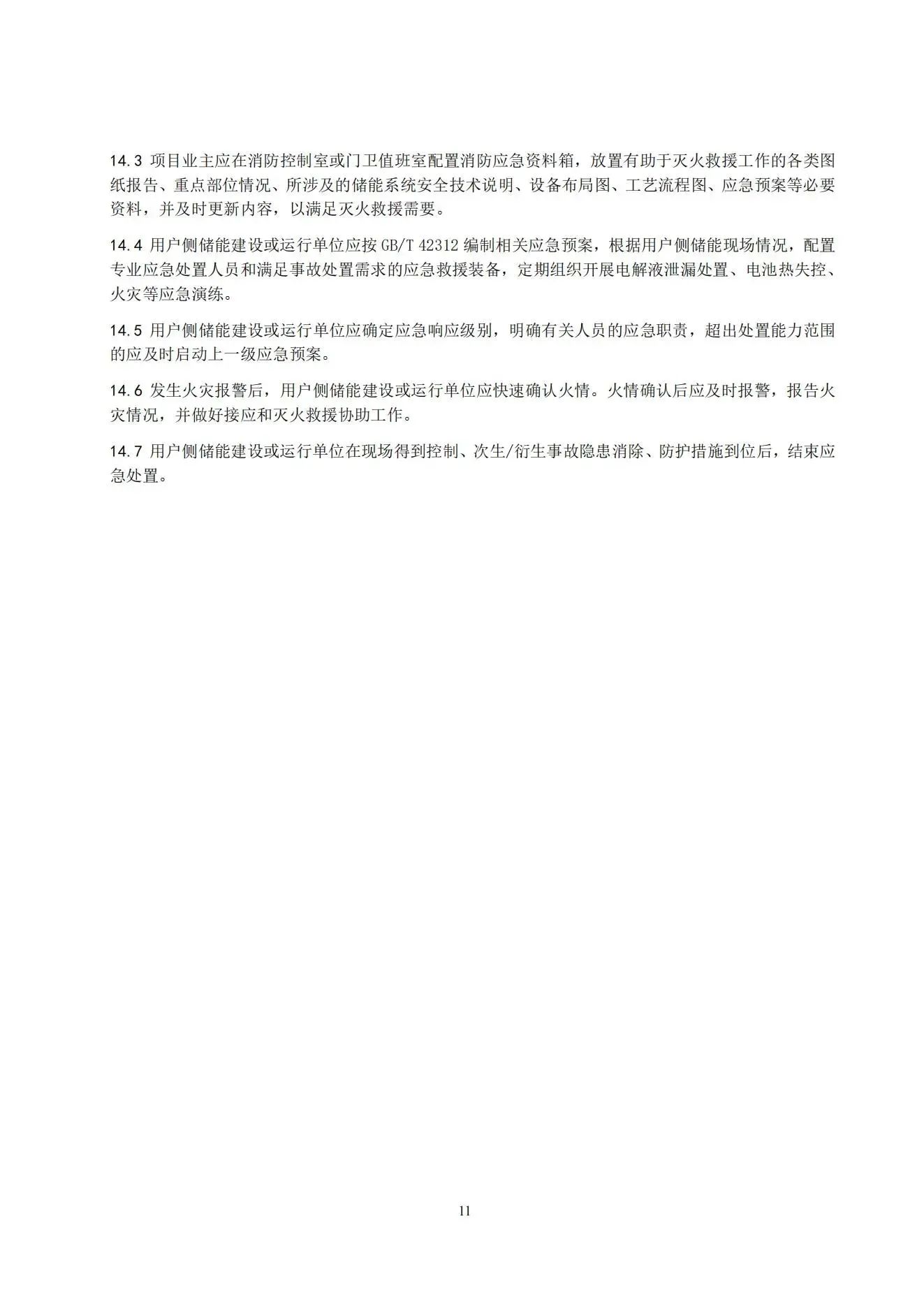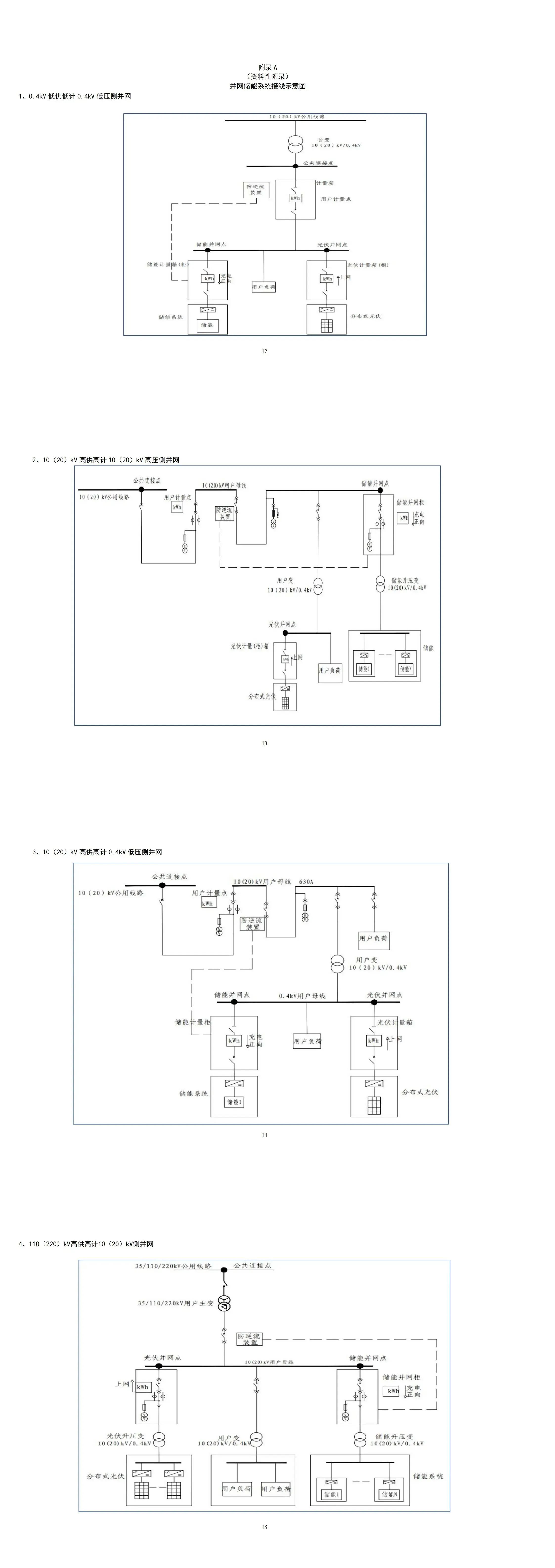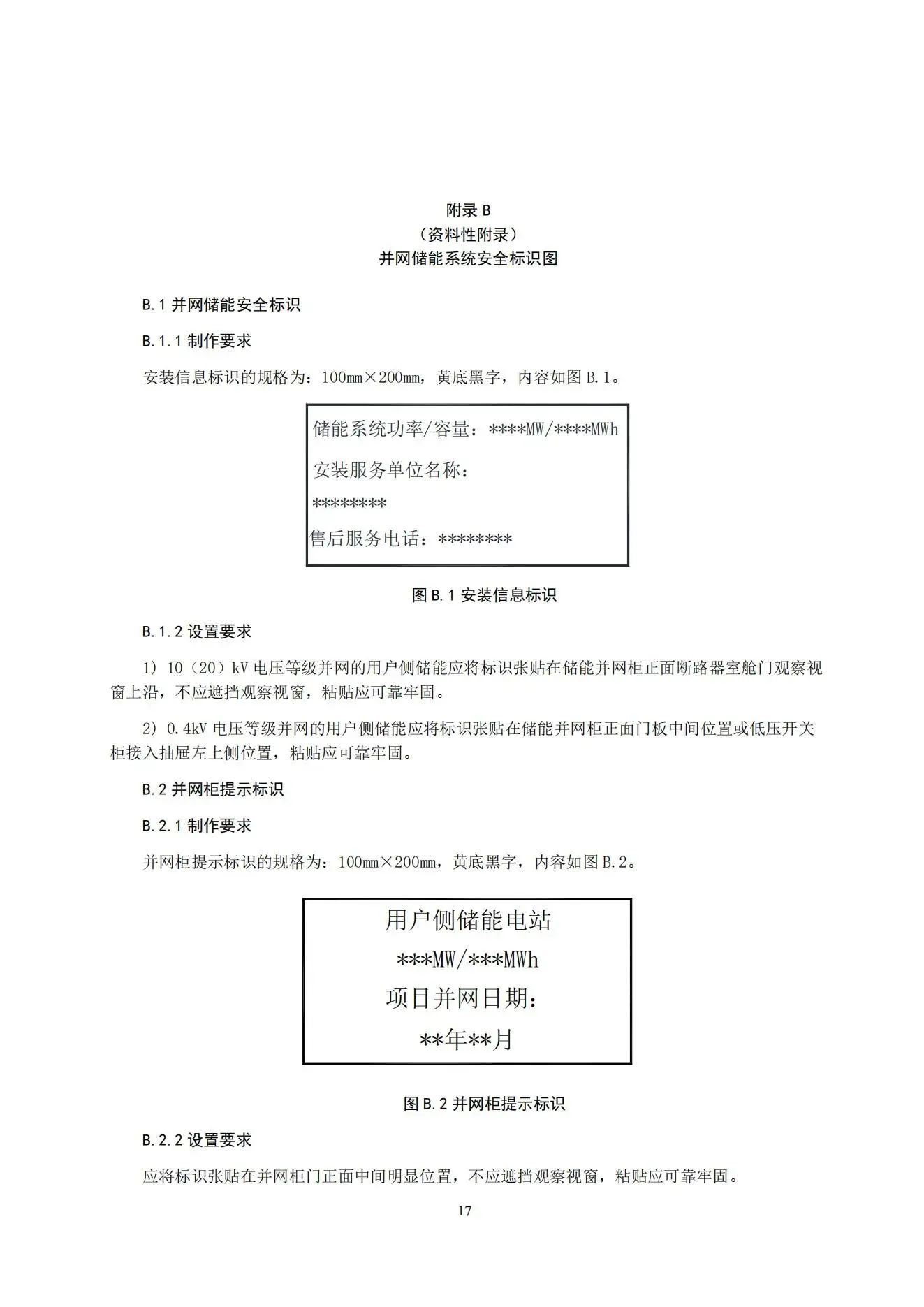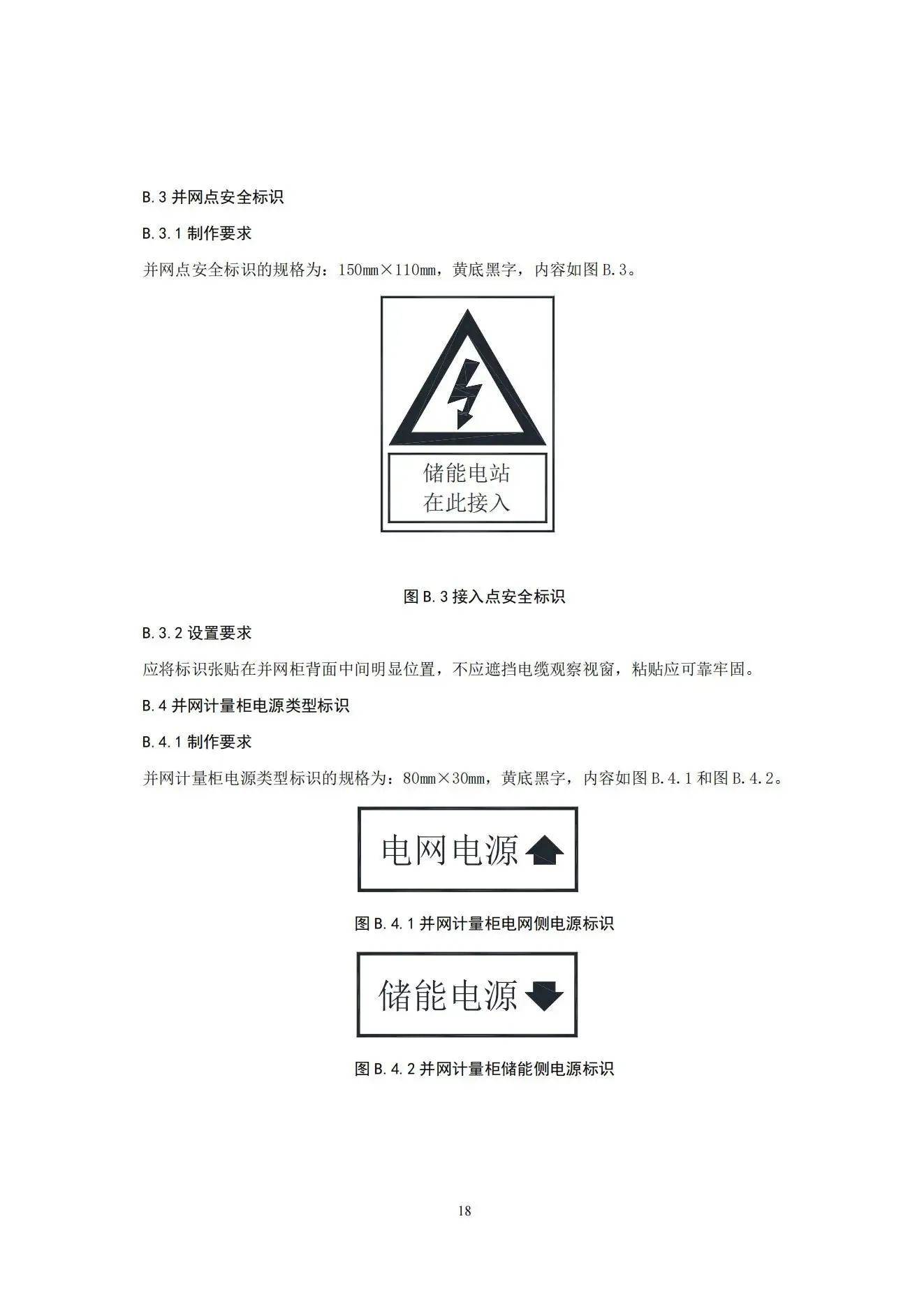Zhejiang user-side energy storage technology guidelines
2023-11-15
On November 3, the Zhejiang Provincial Development and Reform Commission released the
"Zhejiang Provincial User-side Electrochemical Energy Storage Technical Guidelines" (draft for comments)
(hereinafter referred to as the "Technical Guidelines").
The technical guidelines apply to user-side energy storage with voltage levels of 0.4kV and above and rated power
of 100kW and above. It stipulates the construction conditions and capacity determination of user-side energy storage, grid connection, energy storage system, monitoring system, protection communication and control, electric energy
measurement, lightning protection and grounding, acceptance and commissioning, fire protection and safety, operation,
maintenance and decommissioning, and emergency response. Technical requirements for disposal, etc.
The "Guidelines for User-side Electrochemical Energy Storage Technology in Zhejiang Province" (draft for comments)
has important guiding significance for the design, grid connection, and operation of user-side energy storage projects
in Zhejiang Province.
In addition, in terms of acceptance of user-side energy storage grid connection, the "Technical Guidelines" clarify
that user-side energy storage should submit a grid connection application to the power grid company and go through
relevant procedures before being connected to the grid. Only after passing the acceptance check can it be connected
to the grid. This will also change the current problem of difficulty in supervising some user-side energy storage projects,
especially those connected to the low-voltage side.
Capacity determined
It should not cause the user's internal load peak-to-valley ratio to be inverted.
The "Technical Guidelines" clarify the principles for user-side energy storage capacity allocation:
1. The energy storage configuration capacity should not cause the user’s internal load peak-to-valley ratio
to be inverted. Energy storage configuration can be used to reduce the new capacity of user transformers.
2. The energy storage capacity of the low-voltage side grid-connected should be determined after checking
the free capacity of the transformer during the low period. After the energy storage system is installed, it should be able
to achieve an internal load peak-to-valley ratio of at or close to 1:1.
3. The energy storage installation capacity of the high-voltage side grid-connected should be determined based
on the actual maximum load of the user and the spare capacity of the transformer during off-peak periods. It should
not cause the renovation or new construction of external power supply lines and substations.
Grid connection
It is recommended to use the low-voltage side access method of the transformer
The grid connection point should be set at the high and low voltage bus of the user's substation (station)
In terms of grid connection, the "Technical Guidelines" point out that the voltage level of user-side energy storage connected to the user's distribution network should comply with the principles of safety, flexibility, and economy, and recommend that user-side energy storage adopt the low-voltage side connection method of the transformer. and:
1. 0.4kV connection does not exceed 1000kW (inclusive)
2. 10kV connection shall not exceed 6000kW (inclusive)
3. 20kV access does not exceed 12000kW (inclusive)
4. 35kV access does not exceed 30,000kW (inclusive)
In addition, user substations adopt the "high supply, low meter"
In terms of power supply mode, user-side energy storage only allows the low-voltage side to be connected to the grid; user substations adopt "high supply, high meter"
In terms of power supply mode, user-side energy storage can choose low-voltage side grid connection or high-voltage side grid connection. When the high-voltage side of the user substation is connected to the grid, the upper-level line allows safe transmission capacity, busbar carrying capacity at the grid connection point, short-circuit current breaking capacity at the grid connection point, verification of the regional power grid acceptance capacity, etc., and the capacity increase procedures are completed.
Regarding the selection of the grid connection point, the "Technical Guidelines" point out that the user-side energy storage grid connection point should be set at the high and low voltage busbar of the user's substation (station), and should not be set on the user's power supply line and low-voltage feeder. The high-voltage busbar in the workshop power distribution room and terminal power distribution room (box).
1. For a 0.4kV grid-connected user-side energy storage system, in principle, a grid-connected point is set on the 0.4kV low-voltage bus side of a transformer.
2. When the capacity of a single transformer is 2000kVA and above, and there is sufficient space on the low-voltage side of the user's substation, a grid connection point can be added.
3. For grid-connected user-side energy storage systems of 10 (20) kV and above, in principle, one busbar is equipped with one grid-connected point.
4. In principle, the capacity of a single 10kV step-up transformer of the energy storage system does not exceed 2500kVA. It can be boosted and combined through multiple transformers and then merged into the 10 (20) kV bus.
Put forward specific requirements for each link of the energy storage system
In terms of energy storage systems, the "Technical Guidelines" make detailed provisions on energy storage technology selection, converter functions, monitoring systems, protection communication and control, etc.
For battery systems, the "Technical Guidelines" require:
1. Energy storage battery types include but are not limited to lithium-ion batteries, sodium-ion batteries, lead-acid (carbon) batteries, and flow batteries.
2. The battery should have no deformation or leakage. The battery poles, terminals, and connecting strips should be firmly connected, and insulation and shielding measures should be taken for exposed live parts.
3. The battery array should have measures to quickly disconnect the DC loop in case of short circuit, fire or other emergencies, and should be equipped with a DC arc protection device.
For energy storage converters, the "Technical Guidelines" require:
1. Energy storage converters should comply with the relevant regulations of GB/T 34120.
2. The energy storage converter for all-vanadium redox flow battery should have the battery zero-voltage starting function.
3. When the energy storage converter is operating at rated power, the DC component of the AC measured current of the energy storage converter should not exceed 0.5% of its output current rating.
In terms of protecting communications and control, the "Technical Guidelines" point out:
1. For user-side energy storage connected to the grid through dedicated lines with voltage levels of 10 (20) kV and above, current protection should be used on both sides of the grid-connected line. When protection setting or coordination is difficult, differential protection can be used.
6. User-side energy storage connected to the grid through 0.4kV and 10(20)kV voltage levels should have low-voltage ride-through and high-voltage ride-through functions.
7. Grid connection points with voltage levels of 10 (20) kV and above should have low-frequency, over-frequency, low-voltage, and over-voltage fault decommissioning and staged (directional) current protection functions.
8. 0.4kV grid-connected user-side energy storage should be equipped with residual current protection, and the operating current and breaking time should comply with the relevant regulations in GB/T 13955.
In terms of fire protection, "Technology Leads" points out:
1. Fences or walls should be installed around user-side energy storage equipment.
In addition, user-side energy storage should submit a grid connection application to the power grid company and go through relevant procedures before being connected to the grid. It can only be connected to the grid after passing the acceptance inspection. The project owner is the main body responsible for the safe operation of electrochemical energy storage power stations. The safety management of user-side energy storage with voltage levels of 10kV and above should be included in the enterprise safety management system. Maintenance of user-side energy storage should include daily maintenance and periodic maintenance.
The original text of the "Zhejiang Province User-side Electrochemical Energy Storage Technology Guidelines" (Draft for Comments) is as follows.
